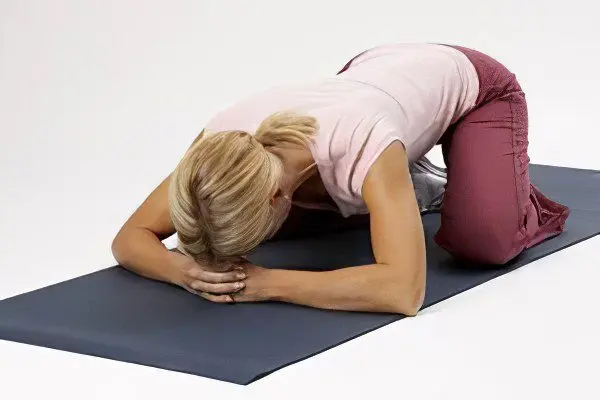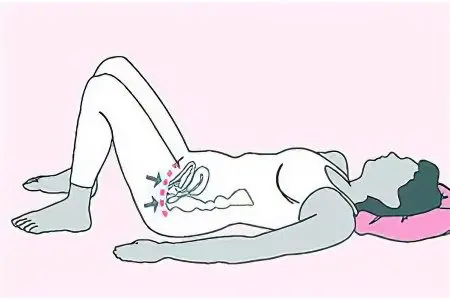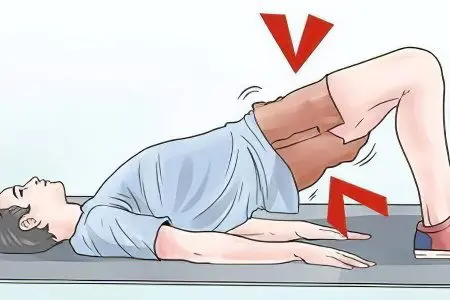Contents

Kegel exercises for urinary incontinence are one of the most effective non-drug methods for correcting this problem. With the help of simple home workouts, you can tone the muscles of the pelvis, which will allow you to successfully control the functioning of the bladder.
Proper and regular performance of Kegel exercises makes it possible to see a positive result after just a few sessions. The complex is useful for both men and women in whom urinary incontinence can be due to a variety of reasons.
Arnold Kegel is a famous gynecologist who practiced in the twentieth century. In the 30s of the last century, he developed his own system of exercises that are aimed at training the muscles of the small pelvis and perineum. His unique gymnastic complex allowed many people to avoid surgery and improve the health of the urogenital area. Although the doctor’s initial target audience was women, it turned out that his exercises are no less useful for men.
The essence of Kegel exercises

There is no single treatment for urinary incontinence. The treatment plan largely depends on the neglect of the process and on the reasons that provoked this problem. With enuresis, doctors recommend starting with Kegel exercises, as with the safest and most effective method of exposure.
The process of urination is controlled by the work of the pelvic muscles. They, in turn, obey the signals coming from the brain. If a failure occurs in this process at any stage, urine begins to flow out involuntarily.
Thanks to the Kegel gymnastic complex, the muscles of the small pelvis are worked out, and the ability to control the process of emptying the bladder returns to people. The exercises do not take much time and are not difficult to implement. However, you need to practice regularly. If there are no contraindications, then anyone can train according to Kegel.
The technique is based on frequent and consistent compression and relaxation of the muscles responsible for urination. The initial compression interval should not be more than 3 seconds, but gradually it should be increased, bringing it up to 20 seconds. During the exercise, the muscles need to be strained as much as possible and try to keep this tension. The relaxation process should take place smoothly, approximately in the same period as the compression.
Benefits of Kegel Exercises

With the systematic performance of Kegel exercises by both men and women, the following effects can be achieved:
Normalize blood circulation in the pelvic organs.
Increase the tone of the vaginal muscles in women and the muscles of the perineum in men.
Get rid of urinary incontinence.
Strengthen sexual health: increase libido, prolong erection.
Women, thanks to Kegel exercises, can prepare the body for easier childbirth, reduce the likelihood of ruptures, and also recover faster after them.
Reduce the brightness of the manifestations of menopause.
Rejuvenates the body.
Kegel exercises are an excellent non-drug method for the prevention of inflammatory diseases of the genital area. Regular exercise has a positive effect on overall health.
Proper execution of the gymnastic complex will activate the muscles responsible for emptying the bladder.
Important tips and tricks

In order for Kegel exercises to be beneficial, you need to understand which muscles should be strained during classes.
The following recommendations will allow you to feel the internal pelvic muscles:
During the emptying of the bladder, one should try to hold the stream of urine with an effort of will. It is at this moment that it will be possible to feel the necessary muscles as much as possible.
Women can insert a finger into the vagina and try to clasp it with internal force. The stronger the girth, the better developed the pelvic muscles.
You can try alternately tensing and relaxing your pelvic muscles while emptying your bladder. But you should not try too hard, they should work evenly and rhythmically.
The bladder should be empty at the time you plan to do the Kegel exercises. Otherwise, the risk of inflammation of the urethra and the development of an infectious process in the organs of the genitourinary system increases.
It is strictly forbidden to perform Kegel exercises while taking a hot bath. The vessels at this time are dilated, which threatens with a jump in blood pressure.
Rules for performing Kegel exercises

The gymnastic complex will benefit only if it is performed correctly. In this regard, the implementation technique is very important. When exercises are done with violations, there will be no positive dynamics.
The basic rules for performing Kegel exercises are as follows:
You can not start classes with an increased load. You need to increase it gradually, as the training of the muscles increases.
If the exercises are easy, then the load can be increased faster.
Do not perform more than 30 repetitions of the same exercise at a time.
You need to work in the system. Missing classes will negatively affect the result.
When positive dynamics begin to be traced, do not stop exercising. Otherwise, progress will be quickly lost. However, the load can be reduced.
During exercise, you need to control the pelvic muscles. The muscles of the thighs and buttocks should not be involved.
Muscles need to be contracted rhythmically and relatively quickly.
When performing a gymnastic complex, you should focus on 3 key techniques:
Tighten your pelvic floor muscles, count to three and relax them.
Moderately squeeze the muscles and hold them for 5 seconds.
Do not relax the muscles, holding back a slight tension in them, count to yourself to three.
Is Kegel Exercise Safe for Urinary Incontinence?

Kegel exercises are not always safe.
It has a number of contraindications:
Do not perform Kegel exercises for people who have recently undergone abdominal surgery.
Men should not perform exercises in the presence of a malignant or benign tumor of the prostate gland.
Do not perform gymnastics in the presence of an acute infectious process in the body or inflammation of the pelvic organs.
Do not perform Kegel exercises during exacerbations of heart and vascular diseases, as well as against the background of pelvic organ prolapse (at its last stage).
It is not recommended to train the muscles of the perineum after a recent injury or surgery.
Do not perform Kegel exercises on the background of hemorrhoids.
However, if a person has no contraindications, then Kegel exercises for urinary incontinence can be considered absolutely safe. However, a doctor’s consultation will not be superfluous.
Types of Kegel Exercises
Exercise 1. “Reduction”. Its essence is reduced to the alternate contraction and relaxation of the muscles of the pelvic floor. You need to perform an average of 10 repetitions, 3-4 times a day.
Exercise 2. “Content”. The essence of the exercise is similar to the “Contractions”, but at the same time, during muscle tension, you need to try to keep them in this state for a certain time (about 5 seconds with a further increase in the delay interval).
Exercise 3. «Elevator». This exercise is suitable for women. It should be understood that the vagina is represented by a muscular tube, which begins and ends with a ring, between them there are 3 more rings. During the Lift exercise, you need to alternately tighten and contract these rings. If you do the gymnastics correctly, then in the end you will be able to feel each of the rings.
Exercise 4. “Waves”. The group of muscles of the pelvic floor includes those that form an extended figure eight, consisting of three loops. The first of them is located around the urethra, the second – around the vagina, and the third – around the anus. To perform the “Waves” exercise, these muscles should be compressed and relaxed alternately.
It is best to start mastering the exercises in a standing position. When all of them are available for execution, you can practice them in various poses (lying, sitting, kneeling, squatting, etc.).









